February 5, 2024
Winter Pruning: Companions & Progression
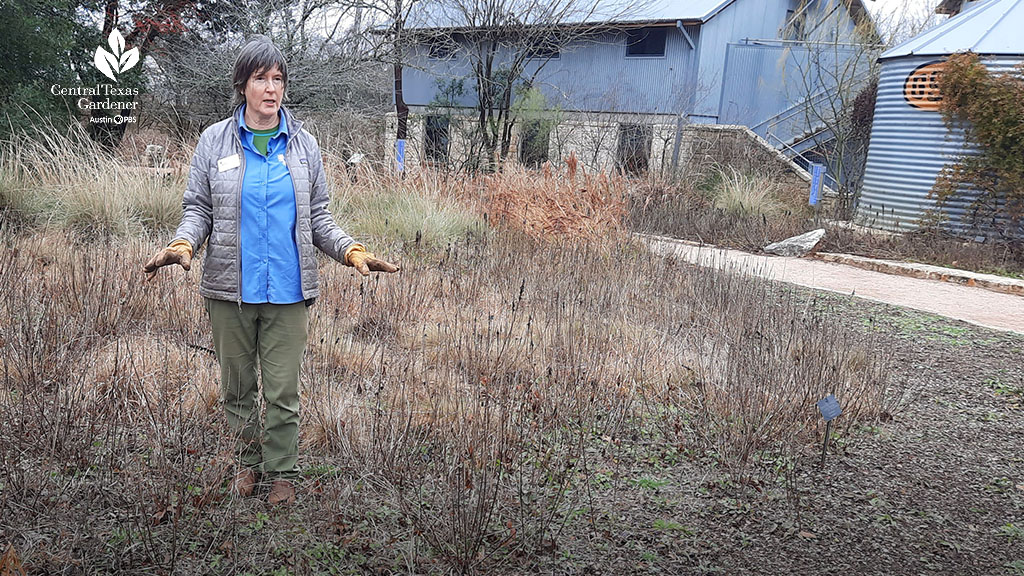
I’m a fan of winter’s richly-toned hues, their quiet palette sandwiched between fall’s leaf-peeping excitement and spring’s sensations. At the same time, I know that post-freeze pruning is on our minds, so Ed Fuentes, Joe Rocha and I headed to the Lady Bird Johnson Wildflower Center for “why and how” with horticulturist Leslie Uppinghouse.
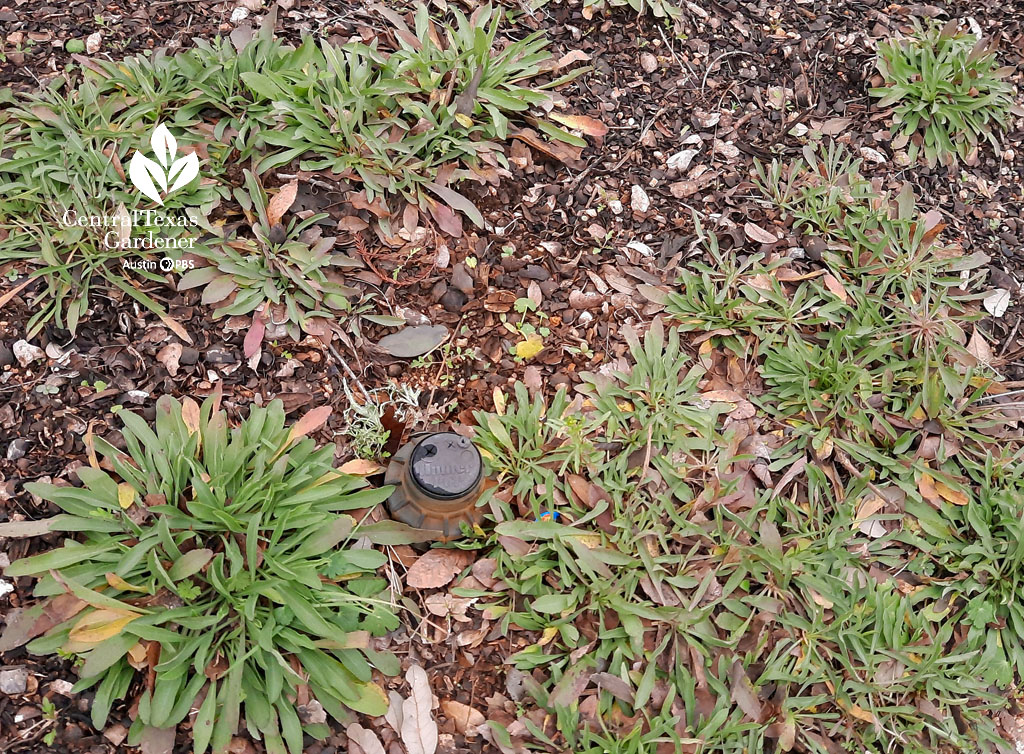
In the front section of the Hill Country Meadow, she’s already cut back browned stalks on perennials like coneflower, winecup, and this prairie goldenrod to show off new growth. Cleaning up also brings in more light for bluebonnet rosettes and upcoming partridge peas.
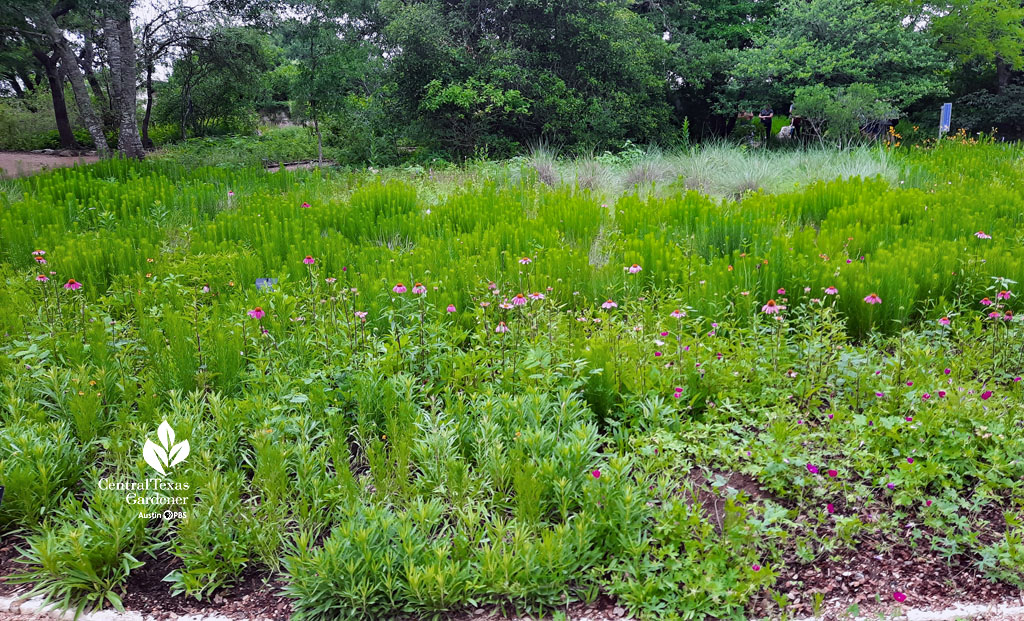
Here’s what it looked like in May 2023: blooming winecup and coneflower mingled with fall-blooming liatris and prairie goldenrod. Big muhly (Lindheimer muhly) flaunts new growth beyond.
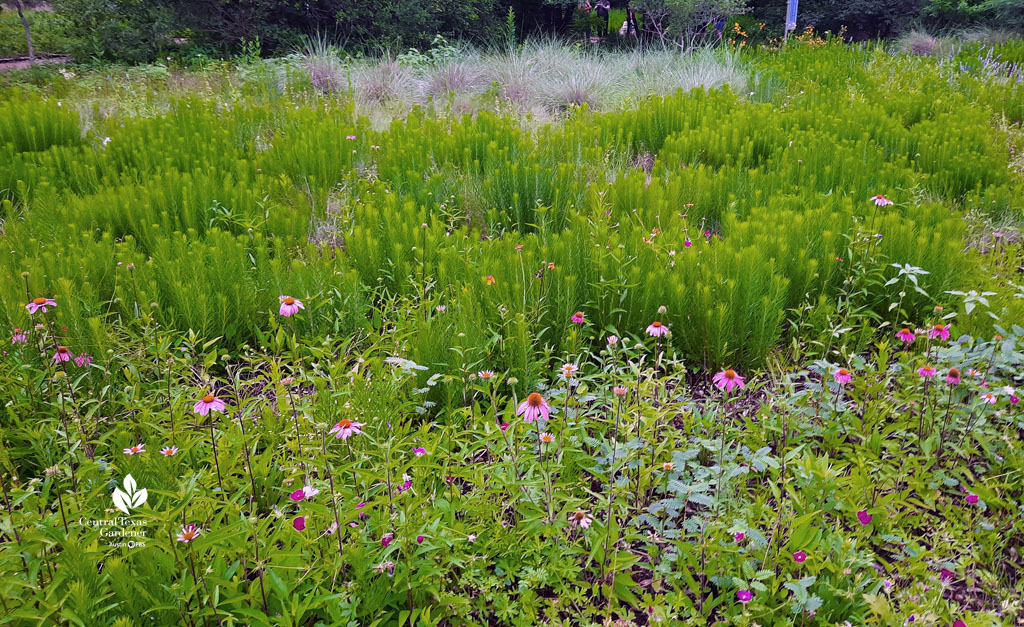
This view reveals partridge pea’s emerging silvery-gray leaves in anticipation of summer’s buttery-yellow blooms.
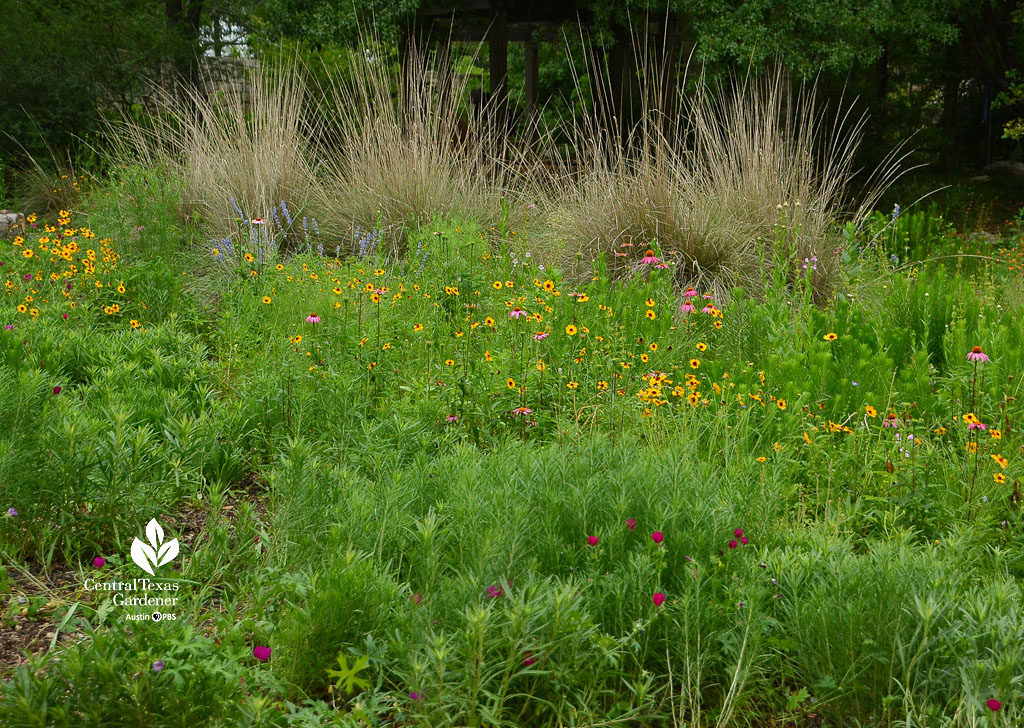
From a few years ago: big muhly, coreopsis, mealy blue sage, spring-green liatris, and blooming winecup.
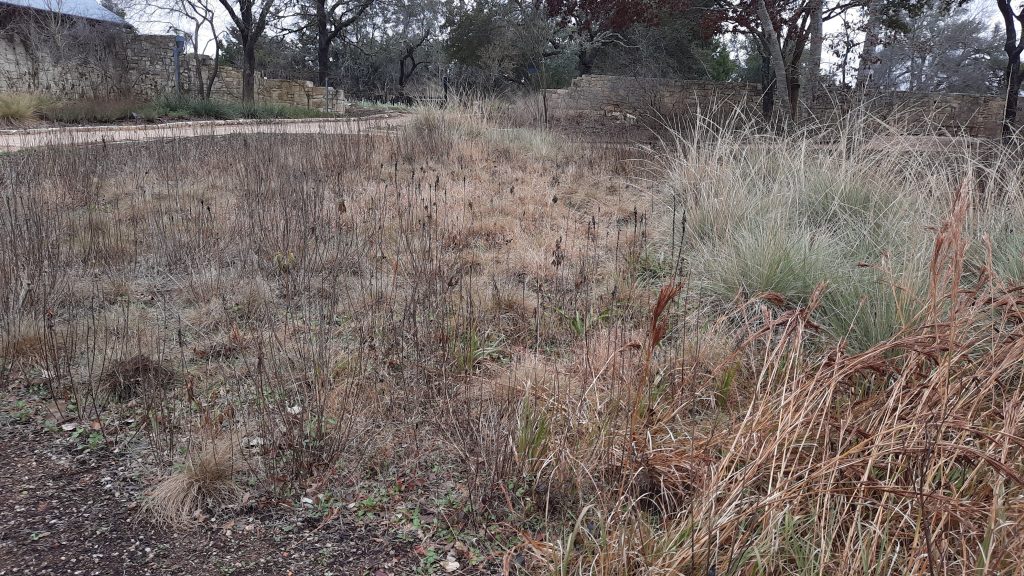
But Leslie’s waiting until mid-February to cut back liatris and bunch grasses like big muhly and russet-toned bushy bluestem. For one thing, she values their beauty. Also, she loves the birds and mammals that feed on the seeds, along with the insects and amphibians that tuck into cozy quarters.
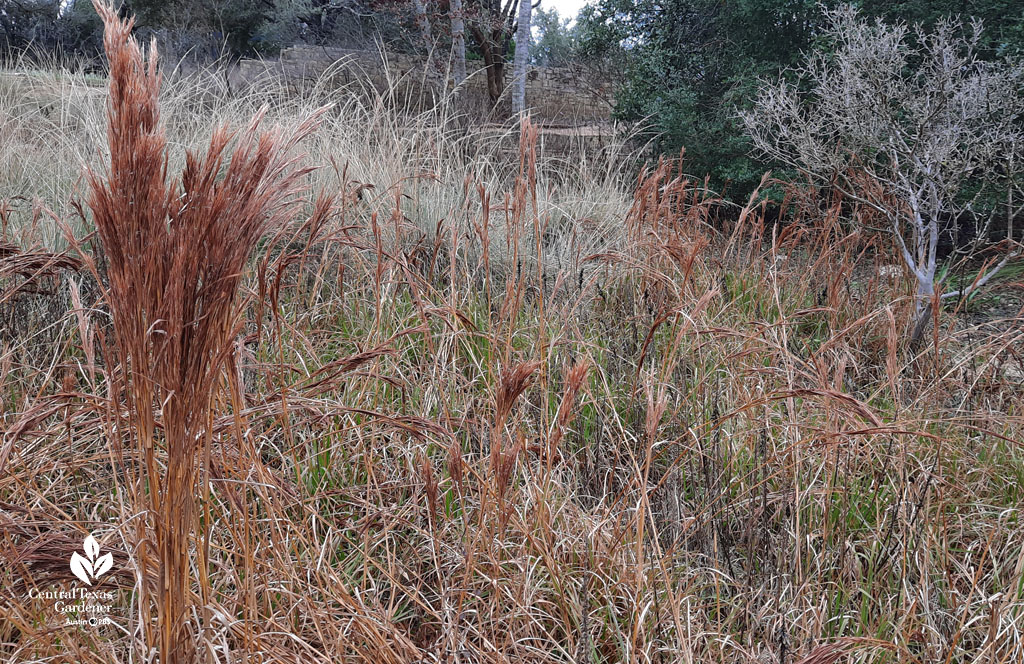
I’d sure name a paint color after bushy bluestem’s “feather duster” winter look.
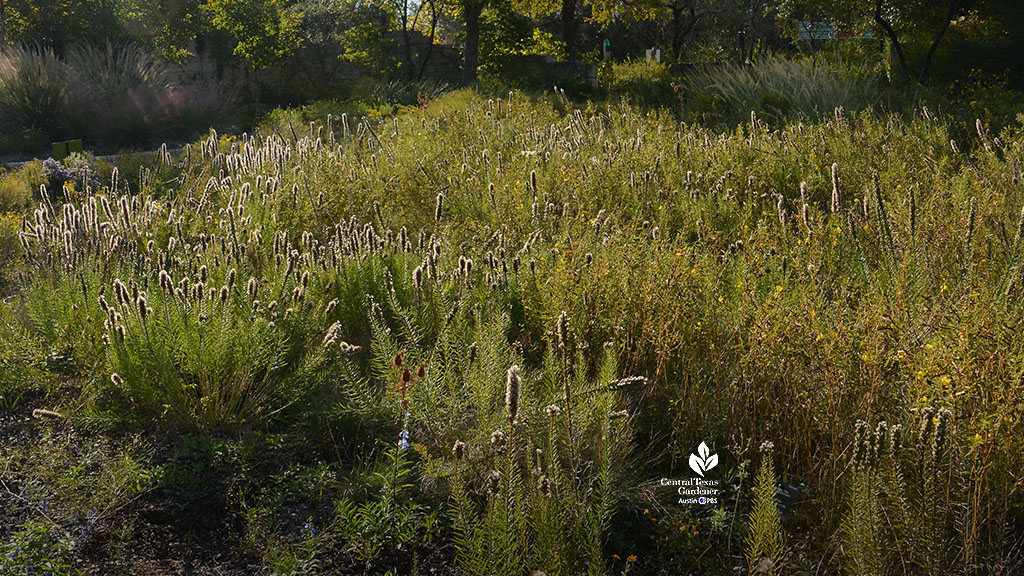
And here’s the meadow in November, when liatris has gone to seed and the grasses glorify the season.
In a border section, Leslie works with another companionship: wax mallow (turk’s cap) and giant spiderwort (Tradescantia gigantea).
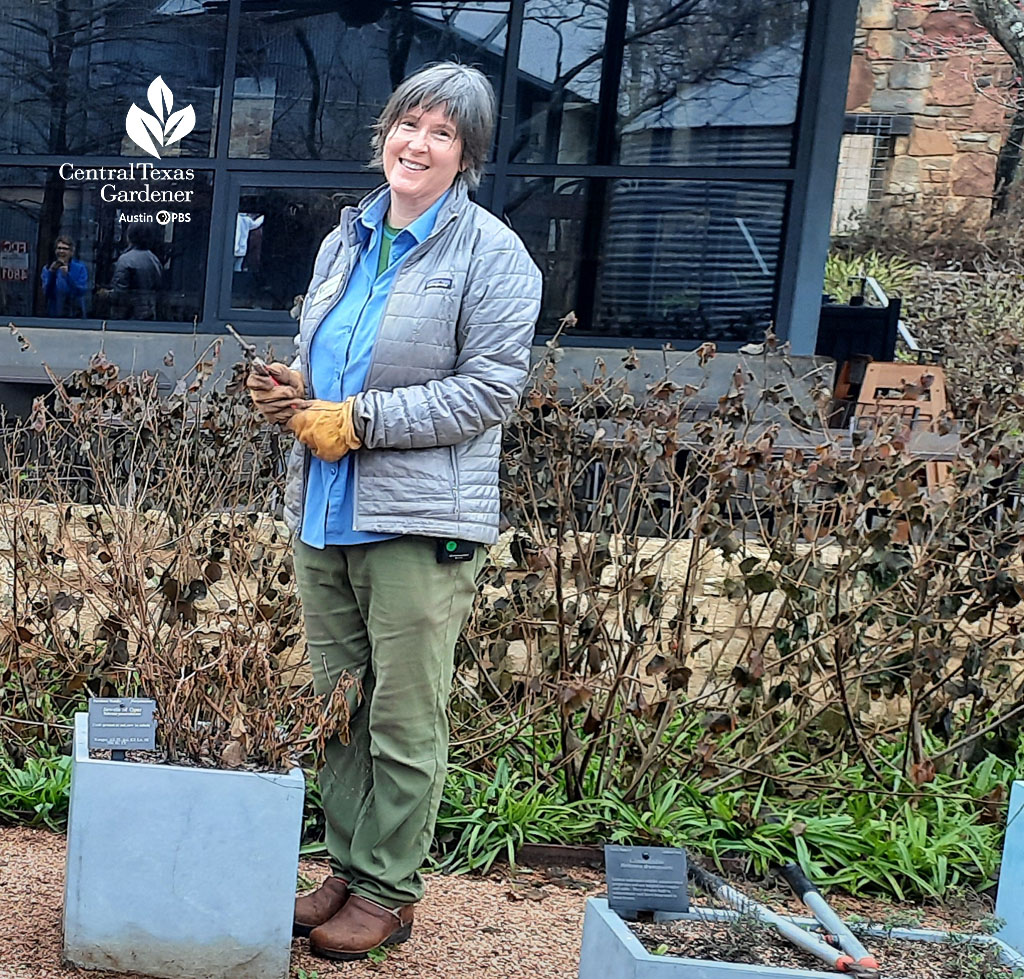
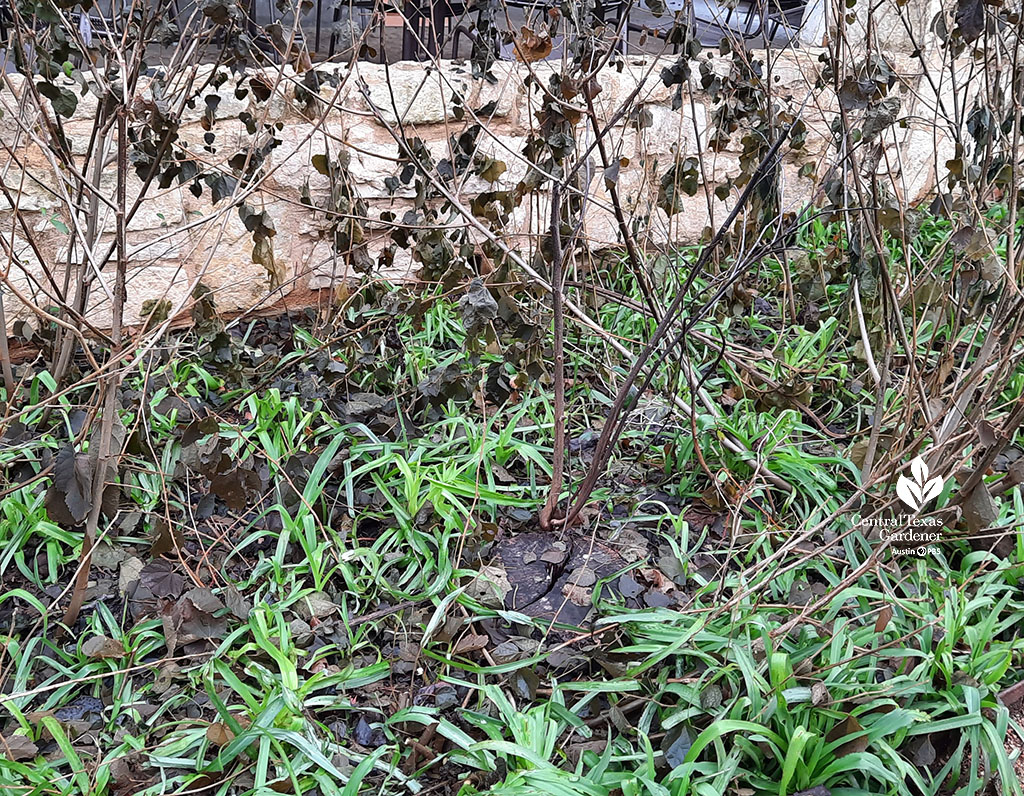
Using loppers, she clips wax mallow’s browned stems at the base to show off spiderwort, winter’s attention-grabber.
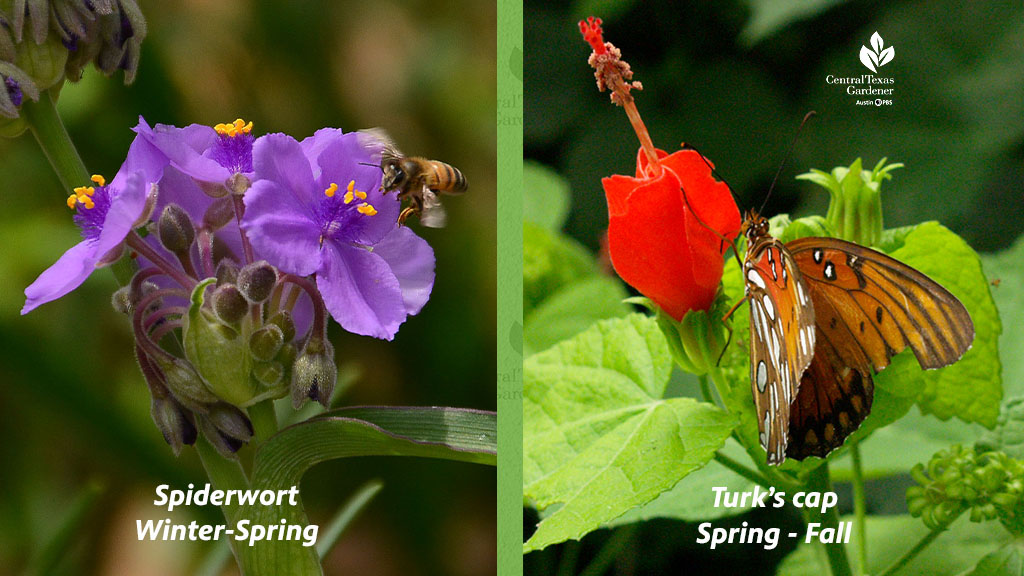
In early spring, lavender, pink, blue or white flowers take center stage for all kinds of foraging insects. As spiderworts fade out in late spring/early summer, wax mallow takes over with bright red flowers and fruits until frost. I can promise: if you have wax mallow, you’ll have hummingbirds!
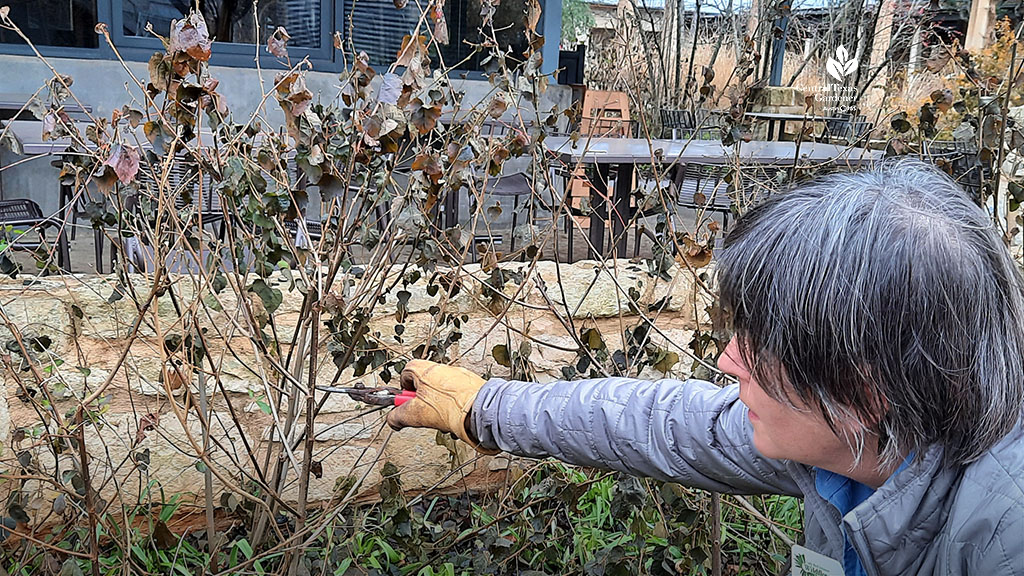
We don’t have to clip it to the ground; we can just lower its height and have fresh growth at the top. Plus, we can tip it during the growing season. Just cut above a node (small bump or swelling on the branch). “This is purely for design and aesthetics,” Leslie told us. “So this is a great example of how to pair two plants based on the shape and size and bloom time to squeeze into a small space to get more bang for your buck.”
Thanks for stopping by! Next week Leslie demonstrates pruning Salvia greggii and mealy blue sage. Linda
tags:

